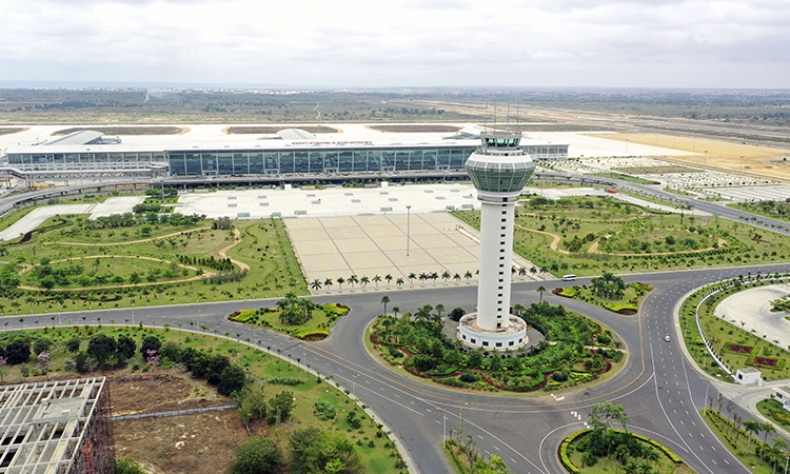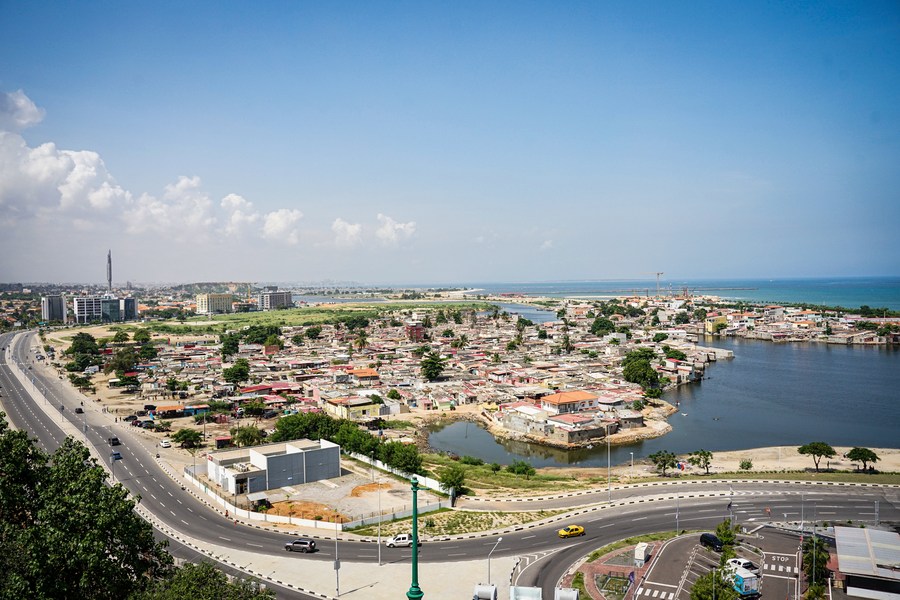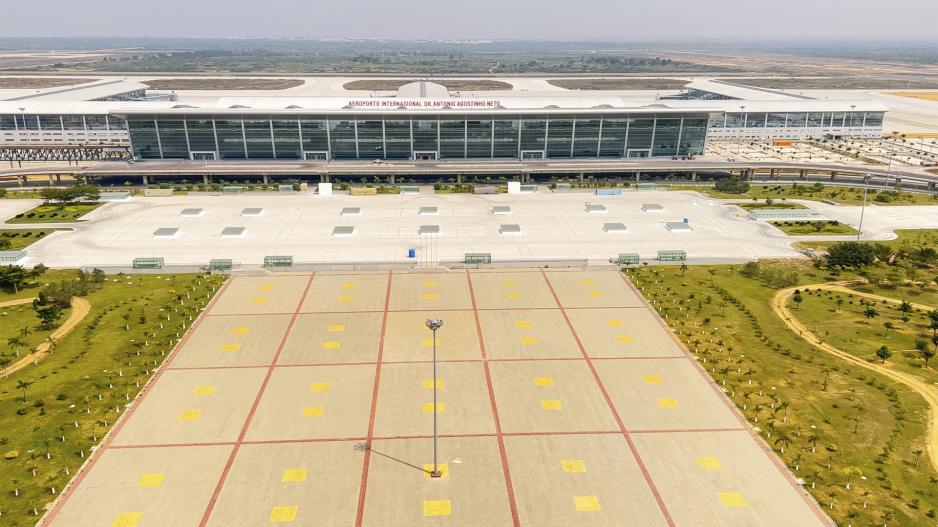Angola’s New International Airport Becomes Symbol of High-quality BRI

No doubt that the landmark AIAAN airport project will improve connectivity and boost economic activity in Angola and make Angola a crucial hub for airport transportation.
As a landmark project of the Belt and Road cooperation, the new Dr. Antonio Agostinho Neto International Airport (AIAAN), Angola’s new international airport went into operation last November.
AIAAN infrastructure is valued at around $3 billion. The project was fully funded by the Angolan government as a public investment. The Chinese government has provided the loan for the airport construction project. China National Aero-Technology International Engineering Corp, the major construction subsidiary of AVIC International Holding is the contractor on the project.
AIAAN is the most comprehensive and largest airport ever built by any Chinese enterprise outside China. The airport project has created more than 10,000 jobs for local residents, ranging from construction laborers to engineers and translators.
What does it mean to Angola, a sub-Saharan country?
Angola, a country located on the south-west coast of sub-Saharan Africa, covers an area of 1,247,000 square kilometres.
Angola is the eighth largest economy on the African continent and one of Africa’s most resource-rich countries. The country ranked as the world’s 16th largest oil producer in 2023 and fourth largest rough diamond producer by value in 2022. Angola also has tremendous agricultural potential.

Luanda is the capital and the largest and most populous city in Angola. Luanda is also the number one port city, the most important industrial, cultural and urban center and serves as its administrative and economic hub.
Luanda plays a crucial role in the country’s economy by serving as the nation’s main conduit for international trade. The city is undergoing remarkable development, with infrastructure and urban planning projects that aim to transform the city into a cosmopolitan and modern center.
Angola’s air and rail transportation capacity expansion are high priorities in the Angolan government’s development plans. Through this plan, the government aims to make Angola a crucial hub for airport transportation in the sub-region and the rest of Africa. This new air hub status will benefit about 415 million people in southern Africa and become Angola’s main gateway to the world.
Envisioned as one of the most important air hubs in Africa, the airport will make the country a powerhouse for regional trade and investment as well. Also, the hub status will facilitate further development of Angola’s transport and tourism sectors, which could trigger development, particularly for the marginalized rural areas of the country’s interior.
As per the Angolan government’s vision, Dr. Antonio Agostinho Neto International Airport was officially inaugurated on 10 November 2023 by Angolan President Joao Lourenco. The airport is named after the nation’s first president. The new Airport, which will serve as the country’s main hub for passenger and cargo services, gradually replacing Luanda’s Quatro de Fevereiro Airport.
The airport is situated in the commune of Bom Jesus, municipality of Icolo e Bengo, Luanda Province which is approximately 40 km from the country’s capital Luanda. The government has taken the necessary arrangements to provide public transport access to the new airport, through trains and buses, namely the construction of new stations in Bungo, Musseques, Viana and Baia, in addition to a connection station and from the New Airport Railway Terminal.

The airport is designed to handle 15 million passengers per year – 10 million international and 5 million domestic and a 130,000-metric-ton cargo capacity. Upon its full operation, the massive facility will be able to facilitate about 100,000 flights each year. AIAAN was designed to be a HUB with domestic, regional and international connections, being Angola’s main gateway to the world.
The airport facility has a total area of 1,324 hectares, with two parallel runways, the airport is prepared to receive the largest commercial plane. The northern runway is 4,200 metres long and 60 metres wide, while the southern runway is 3,800 metres long and 60 metres wide.
The modern passenger terminal building, which occupies 160,000 square metres of land, has 12 aircraft finger docks. The airport also has 31 boarding lanes, of which 19 for international services and 11 for domestic services. It also has nine conveyor belts for baggage storage and transit, six of which are dedicated to international flights.
The cargo terminal occupies 6,200 square metres with an annual cargo capacity of 35,000 tonnes. The cargo compound offers safe and efficient facilities for handling various types of goods, including refrigerated, dangerous, valuable and live animals, distributed in specific areas for import, export and domestic cargo.
The airport includes an 82m control tower, 26 counters of the Immigration and Foreigners Service (SME), and a parking lot for 1,710 vehicles. Other complimentary facilities include shops and services, office buildings, hangars, and lounges. To take advantage of the air hub, the Angolan government has planned to construct office buildings, hotels, conference and exhibition halls, bonded zones and logistics facilities surrounding the new airport.

The transition period of operations from the current airport Quatro de Fevereiro Airport to AIAAN takes place in three phases, with the 1st stage reserved for cargo services, the 2nd phase with domestic flight operations and the last stage, scheduled for June 2024, will be marked by the start of international flight operations. This transition is to ensure safety, testing, certification and staff training reasons.
AIAAN is one of the key projects of the Belt and Road cooperation between China and Angola. Through the Belt and Road Initiative (BRI) in Angola, China has supported modern infrastructure projects which have injected vitality into Angola’s economic and development growth. Cooperation between China and Angola has become increasingly close in recent years as the countries worked together under the BRI. The BRI is well integrated into Angola’s long-term development plan that can improve Angolan economic and social progress.
So far, Chinese companies have contributed to the restoration or construction of 2,800 km of railways, 20,000 km of roads, over 100,000 housing units, more than 100 schools and over 50 hospitals in Angola, and more than 400 Chinese companies have a presence in Angola.
No doubt that the landmark AIAAN airport project will improve connectivity and boost economic activity in Angola and make Angola a crucial hub for airport transportation. And this AIAAN airport project will be a symbol of high-quality Belt and Road cooperation between China and Angola.
The article reflects the author’s opinions, and not necessarily the views of China Focus.
 Facebook
Facebook
 Twitter
Twitter
 Linkedin
Linkedin
 Google +
Google +







